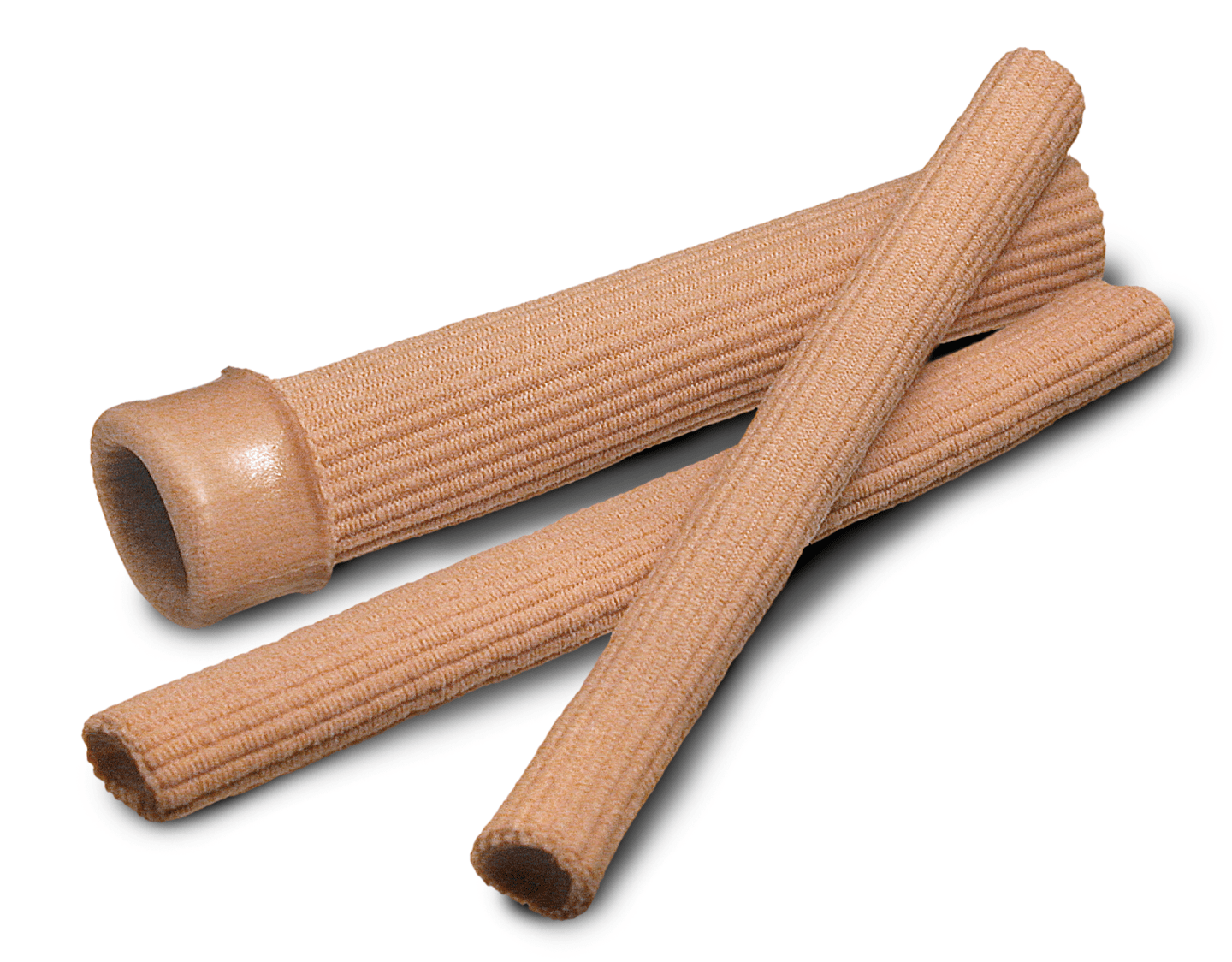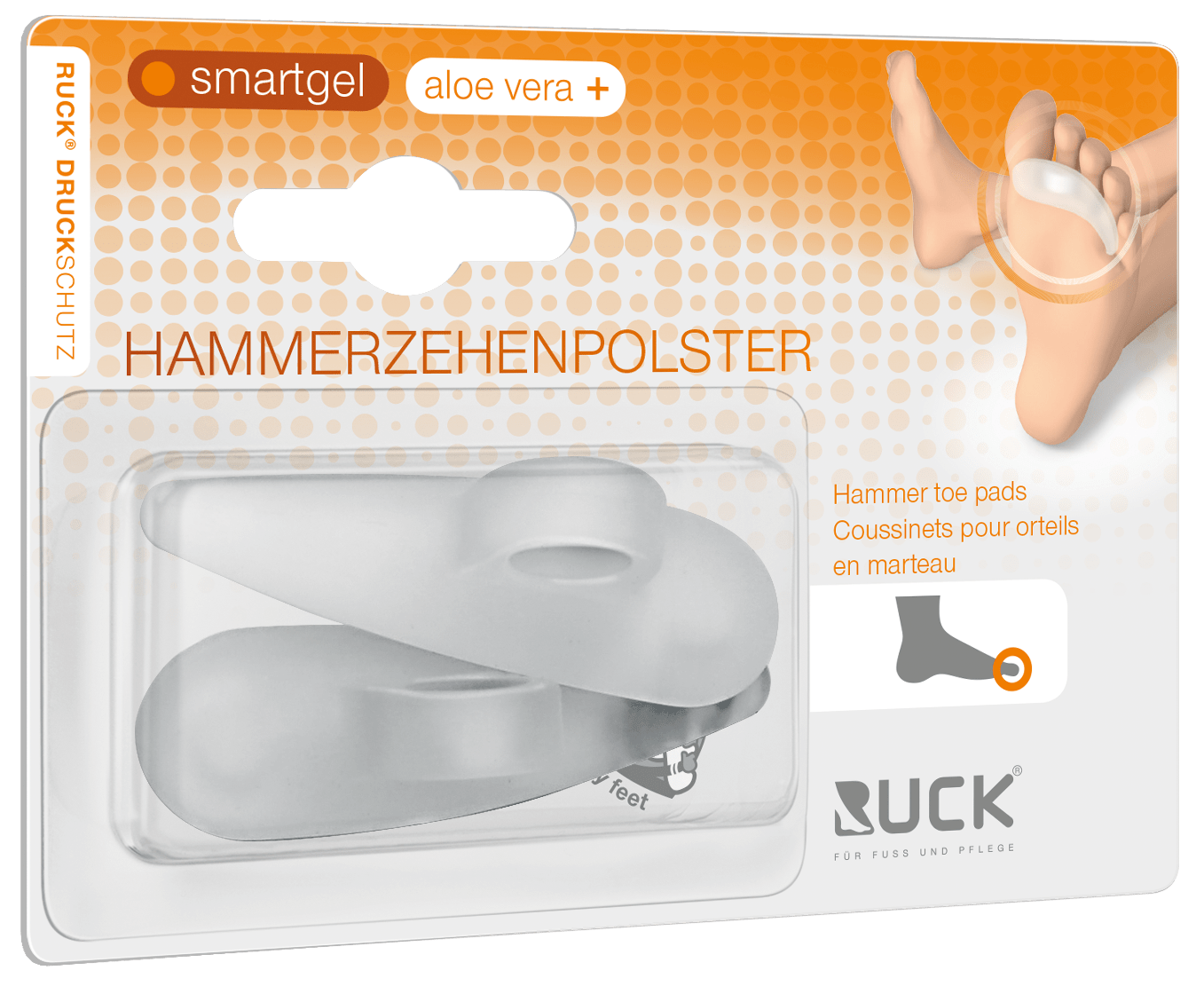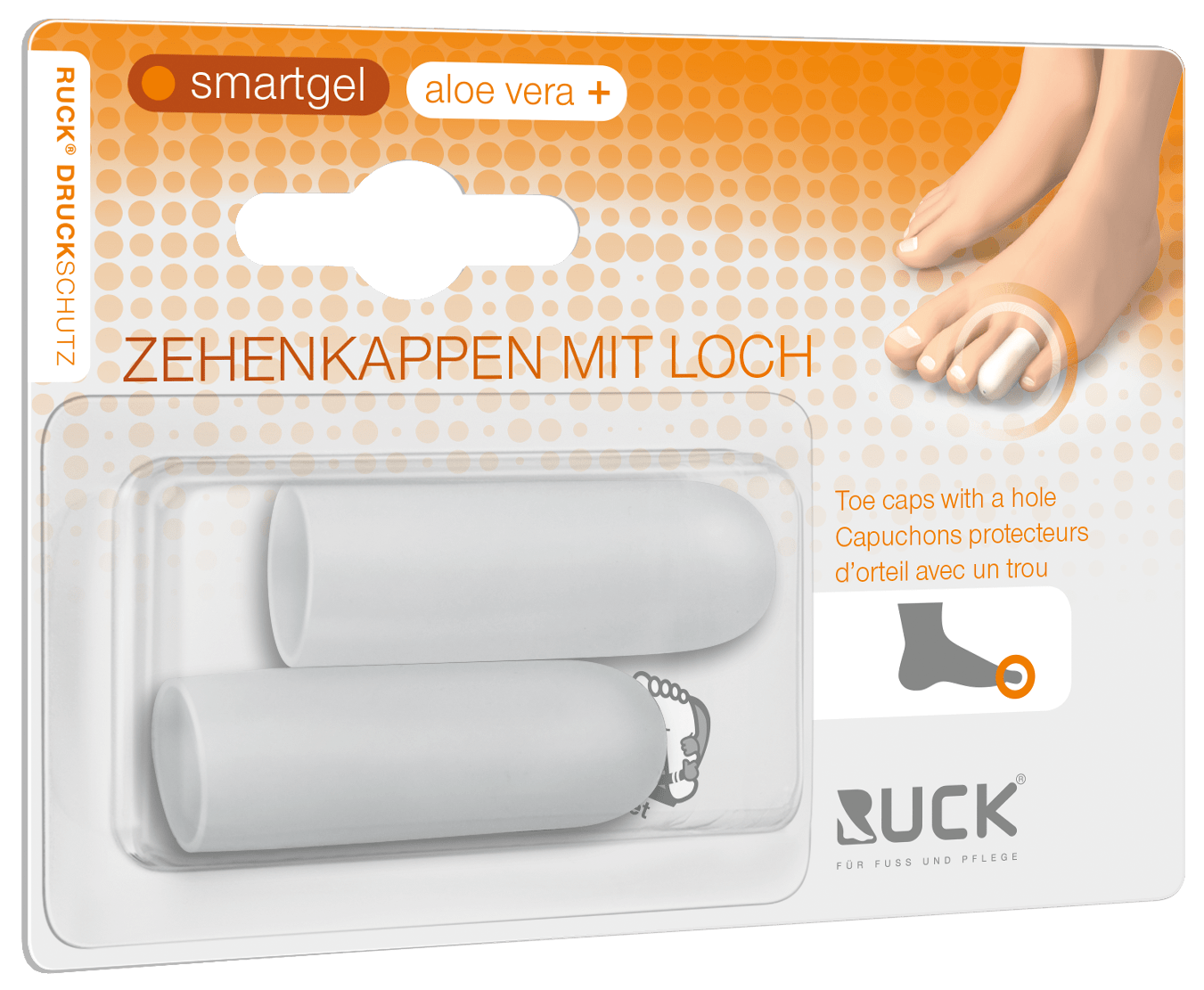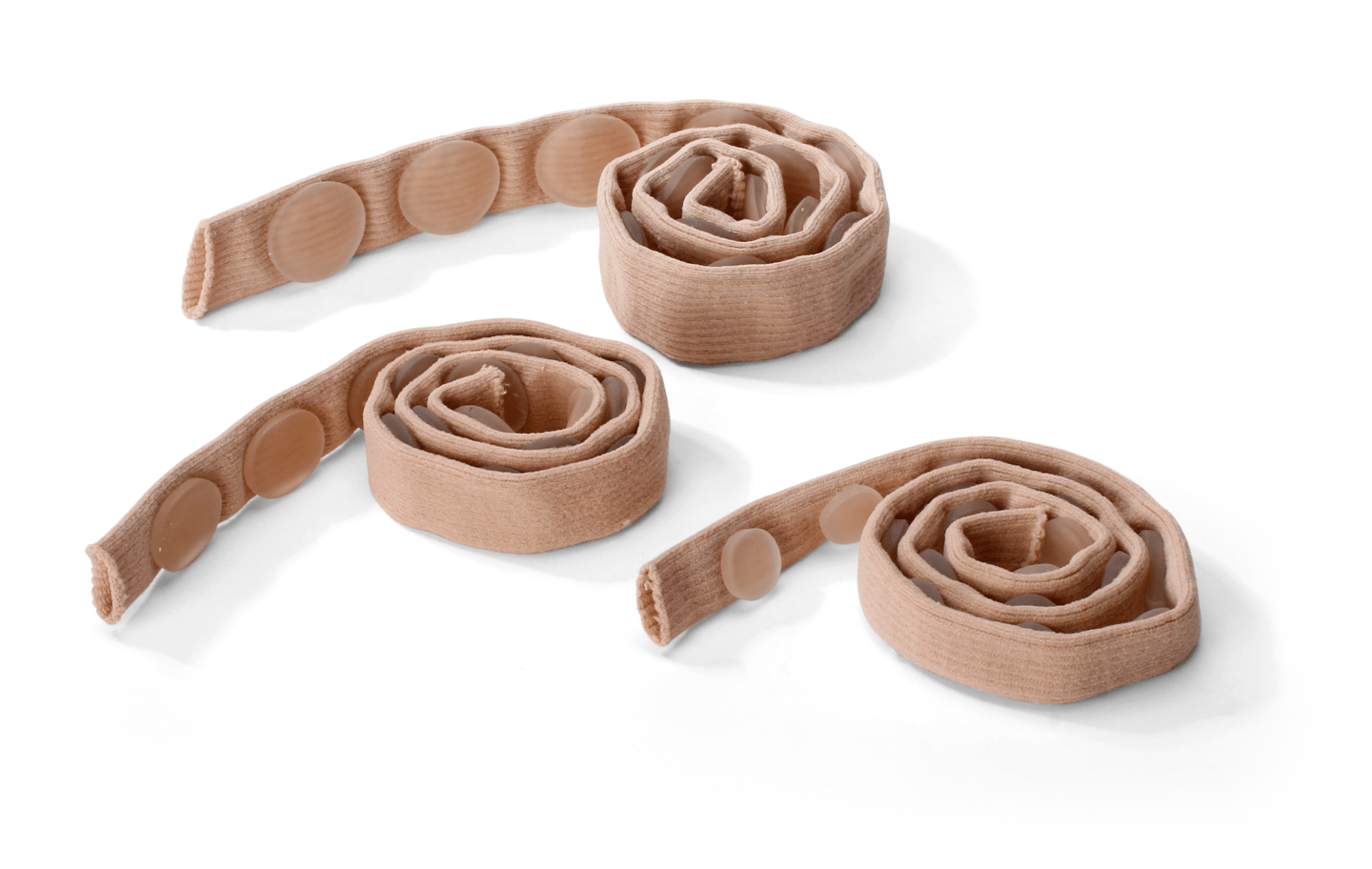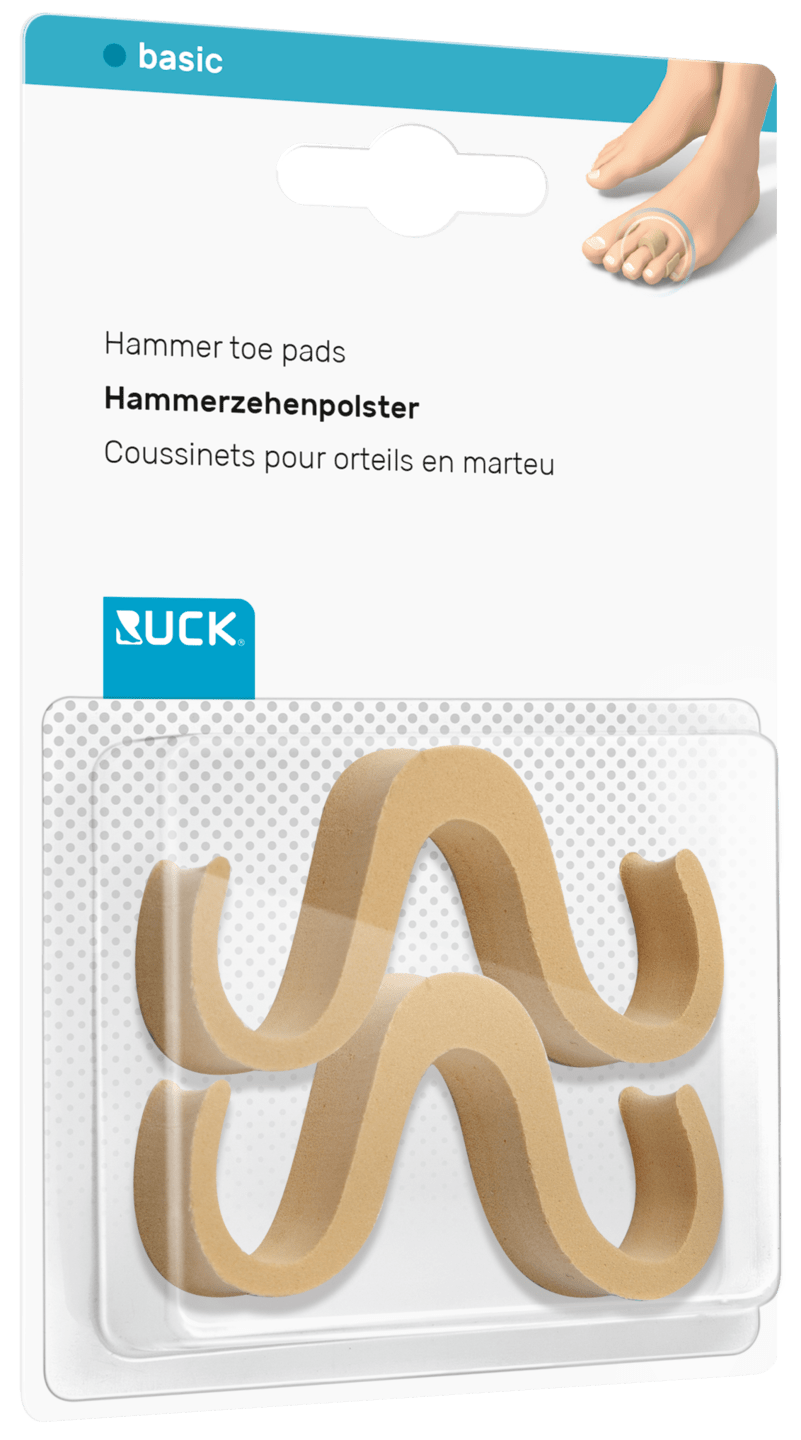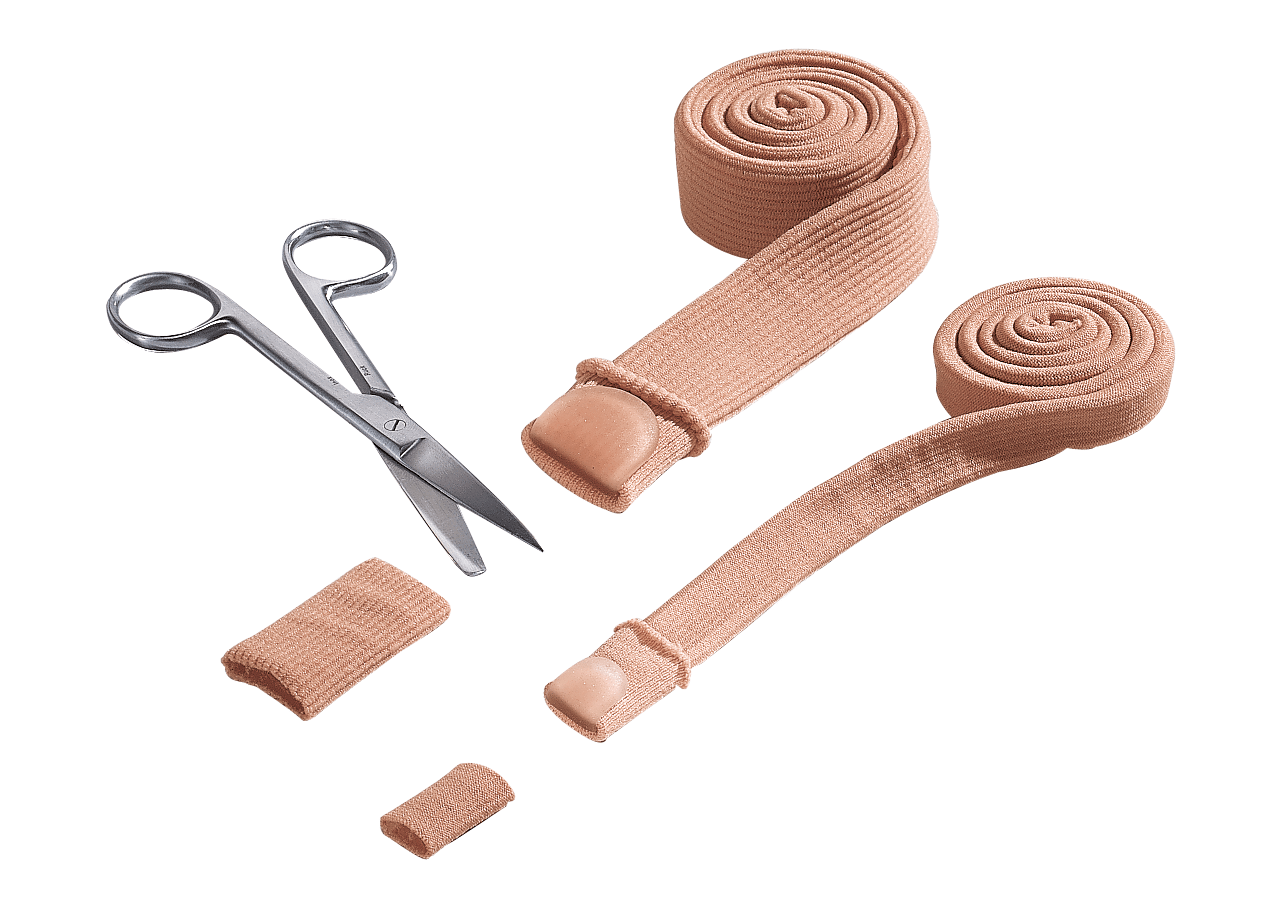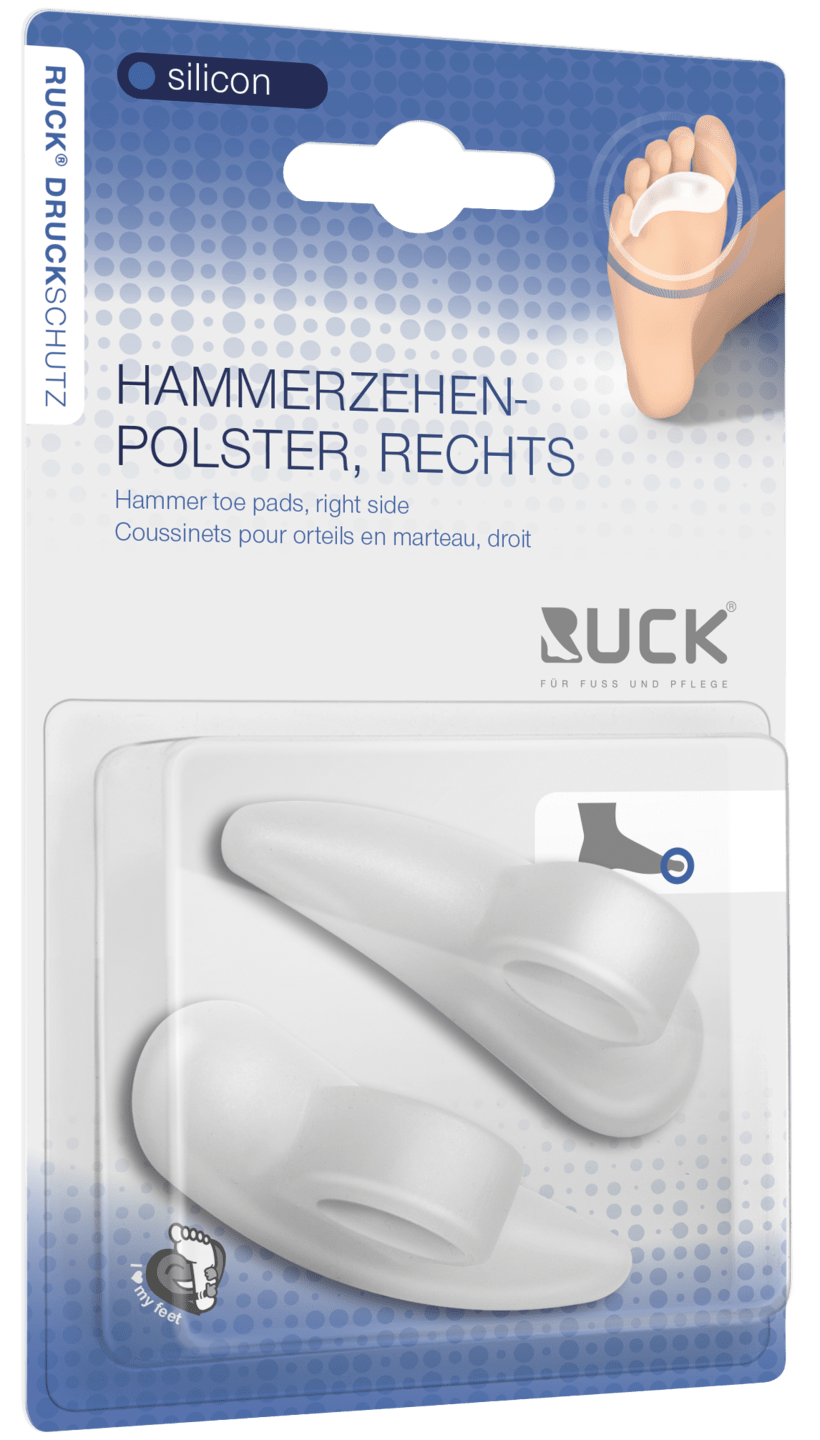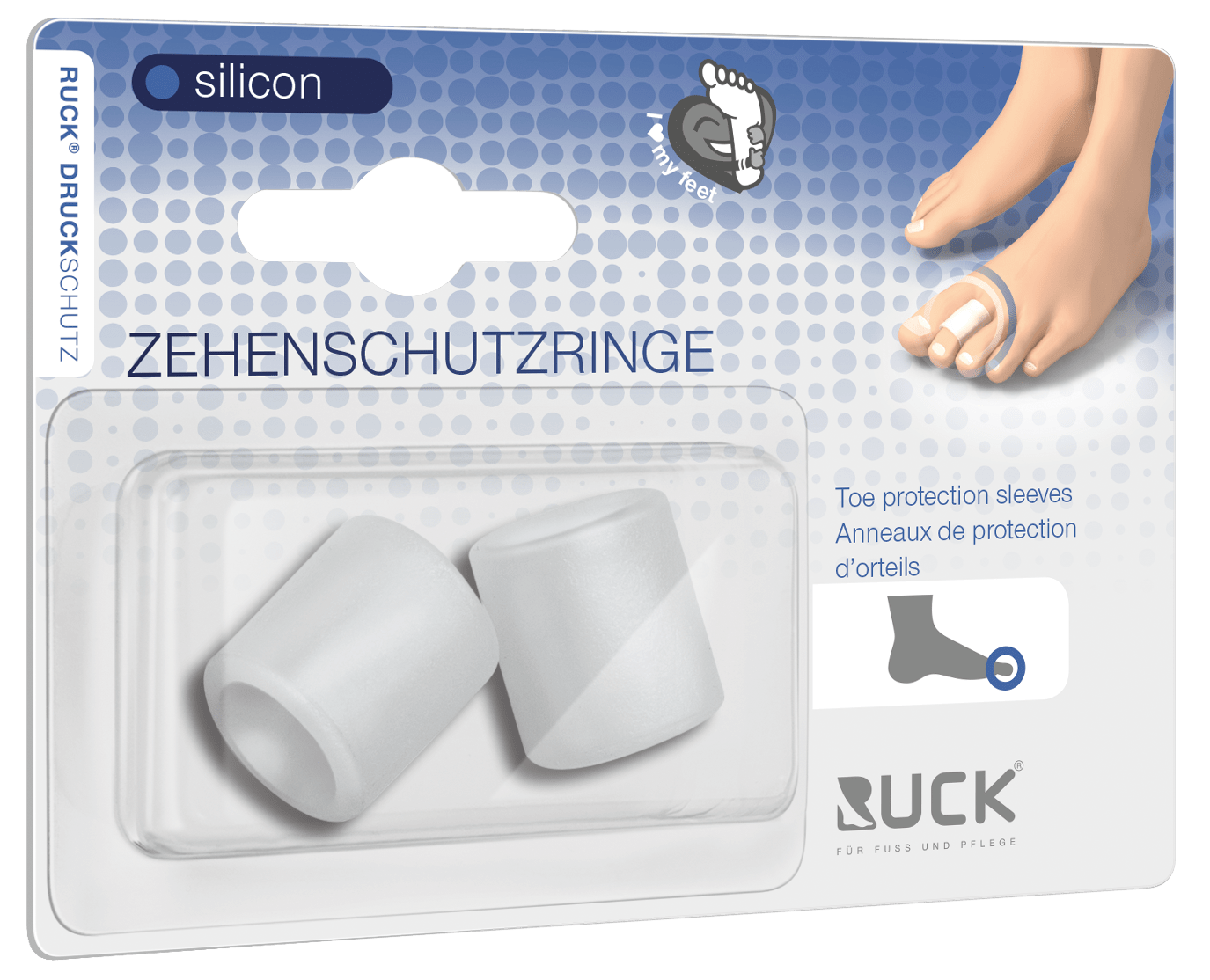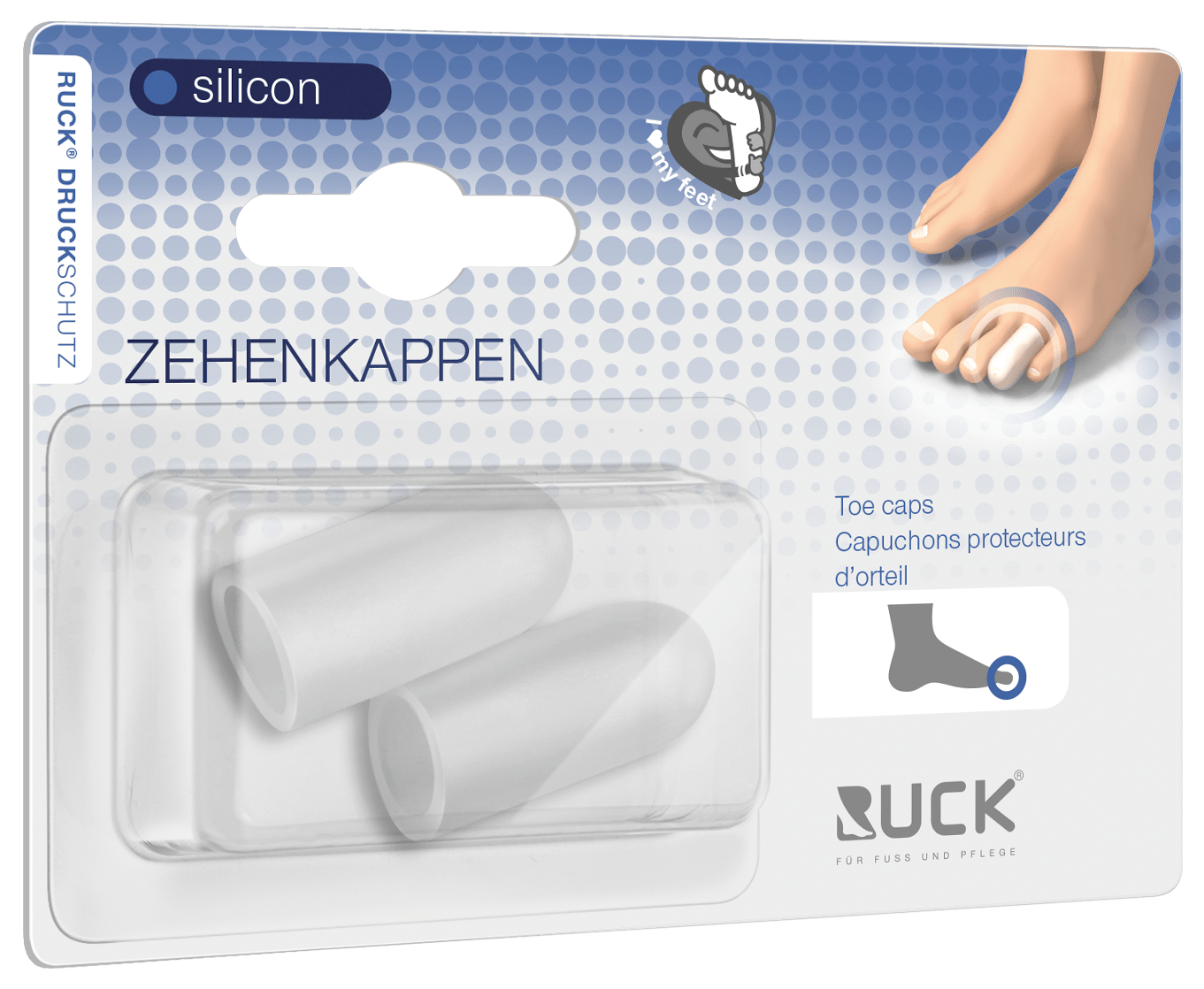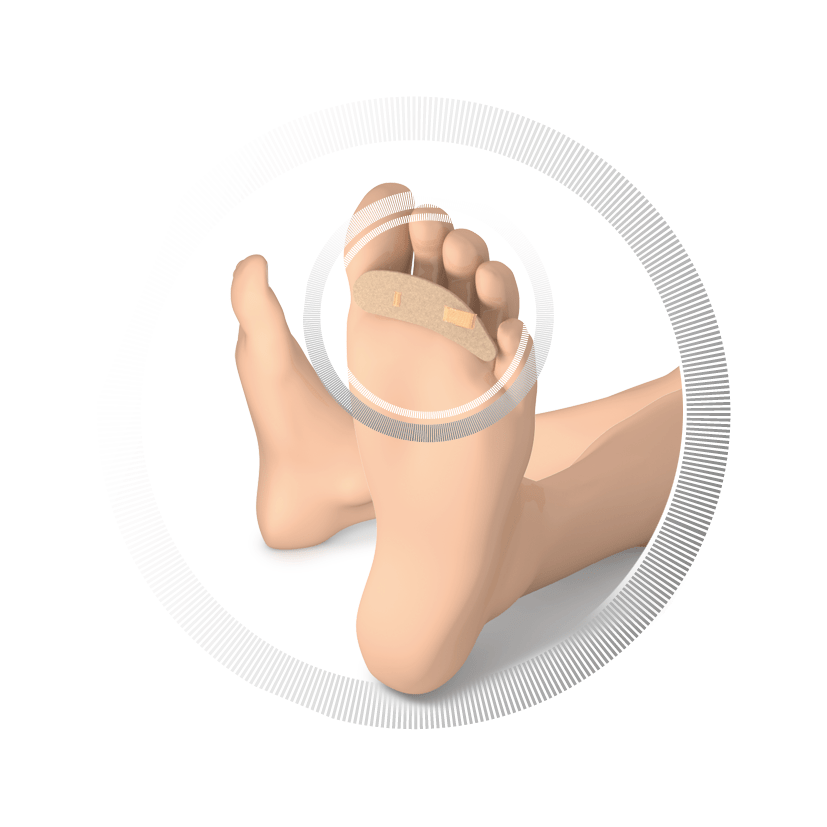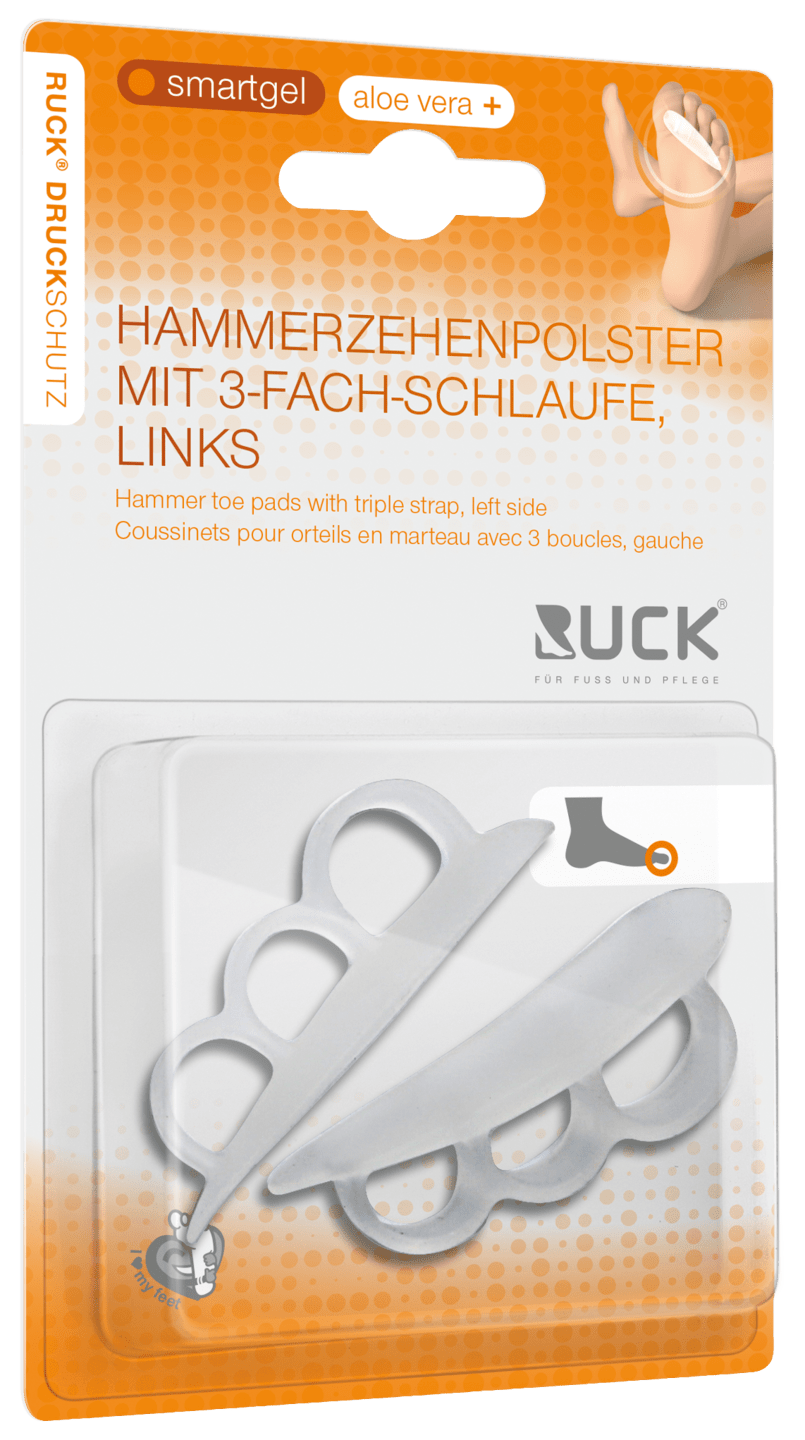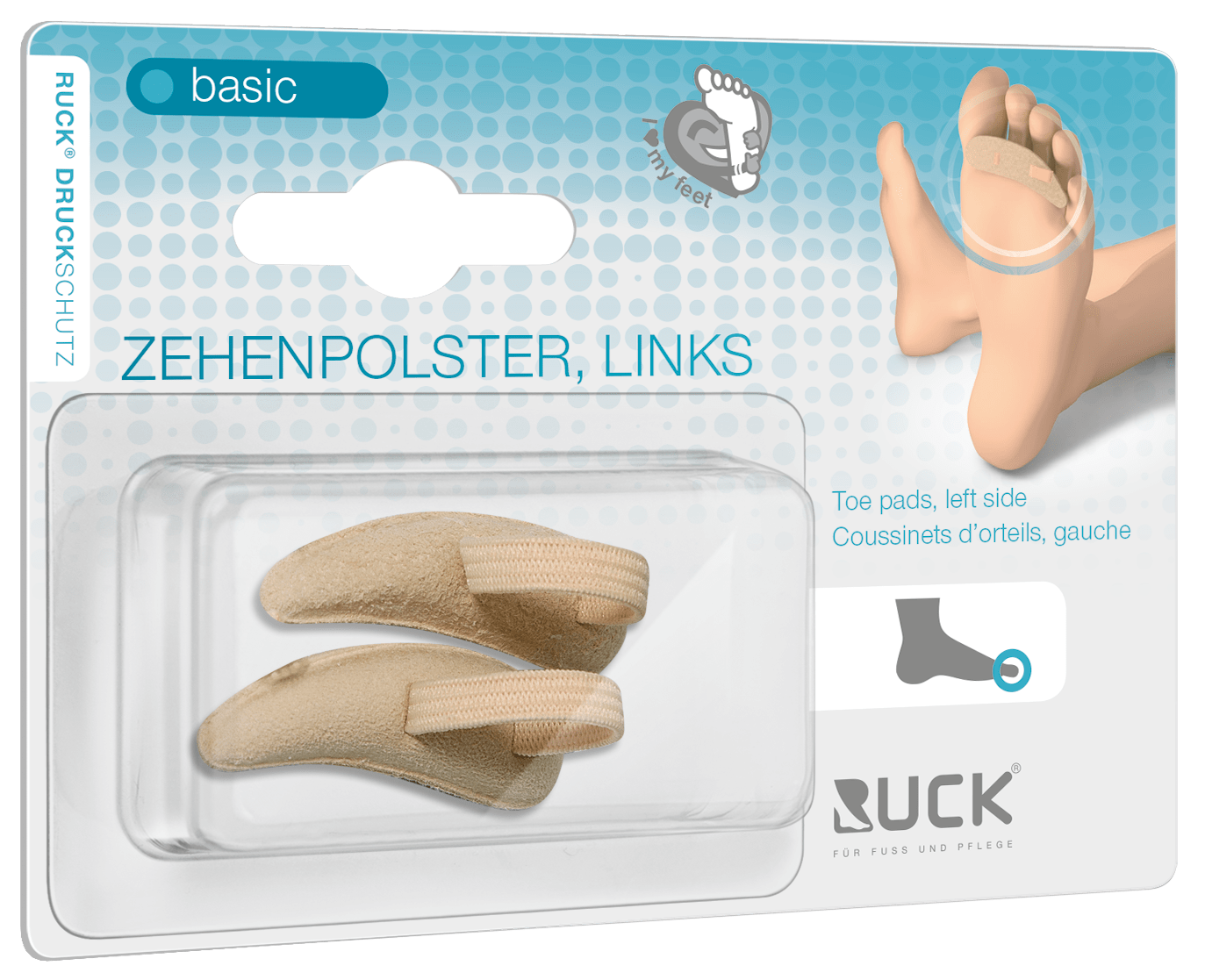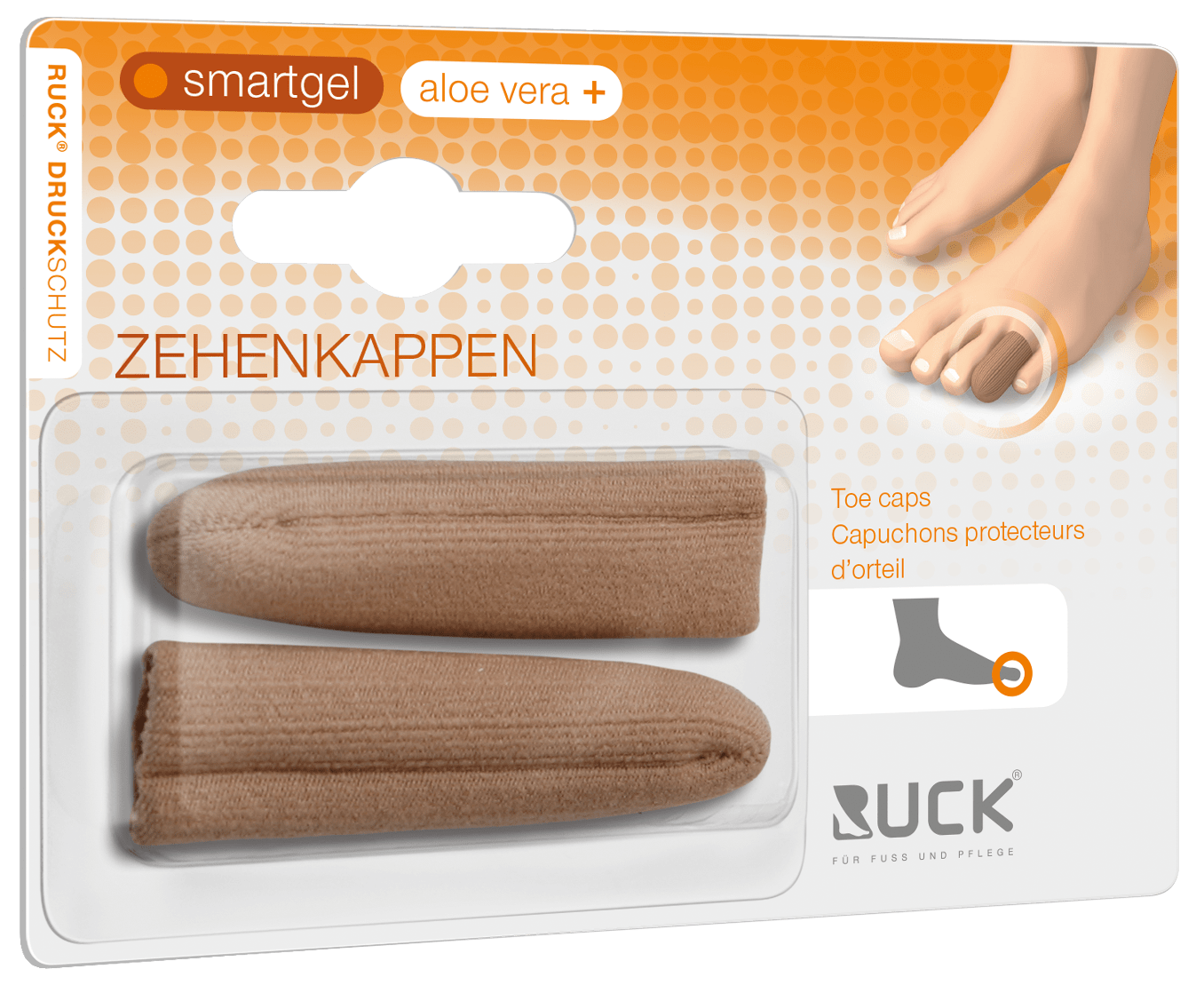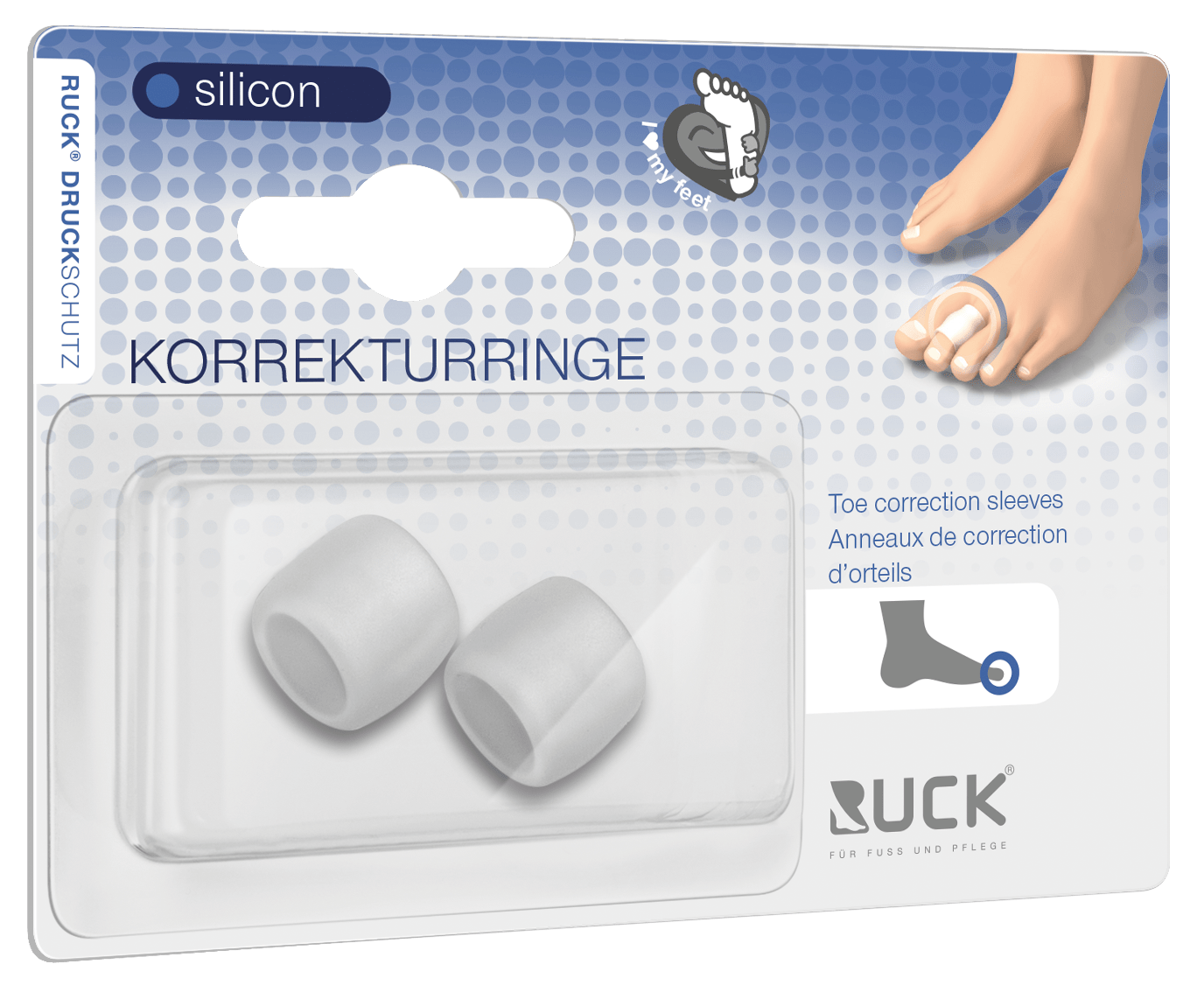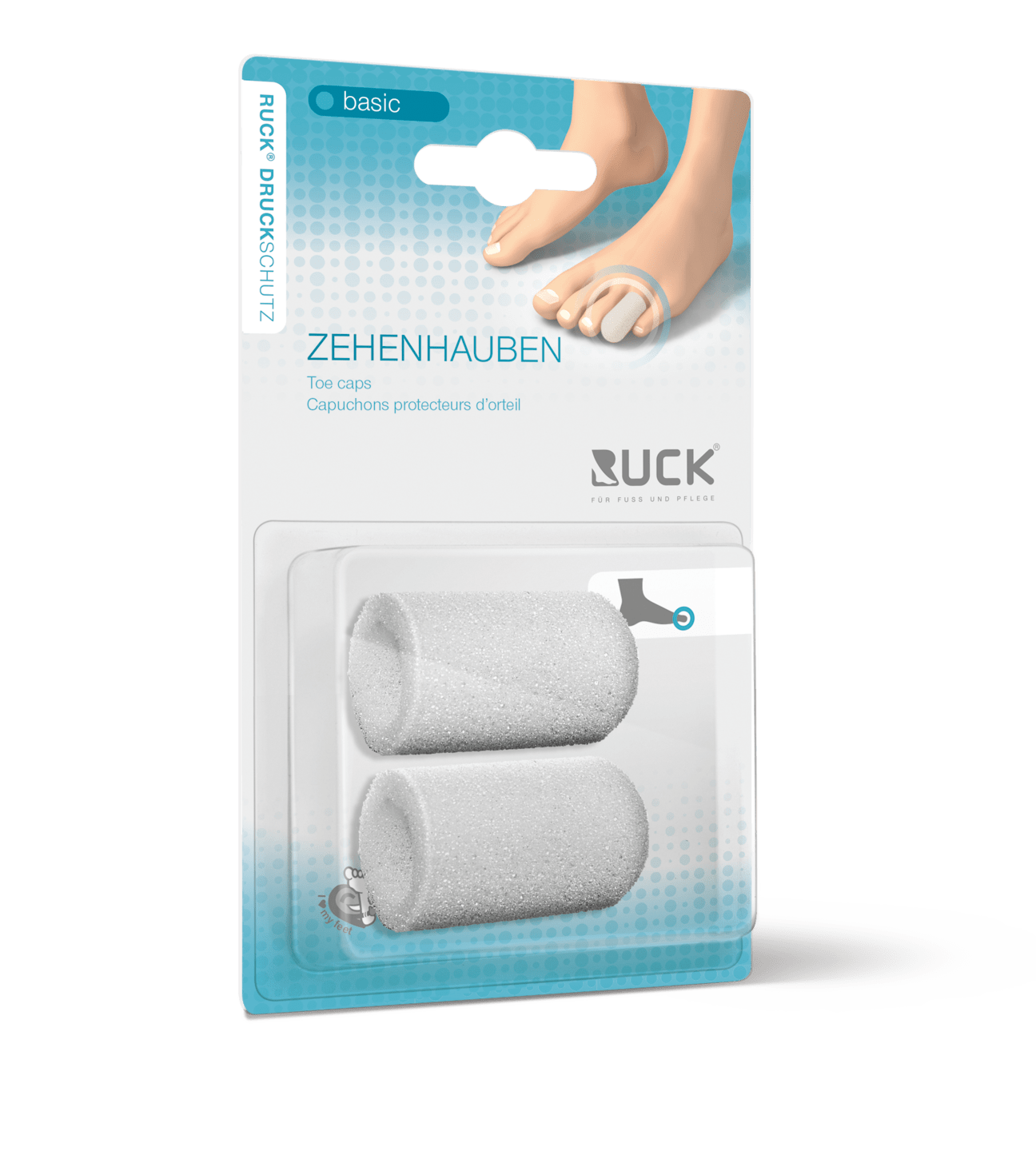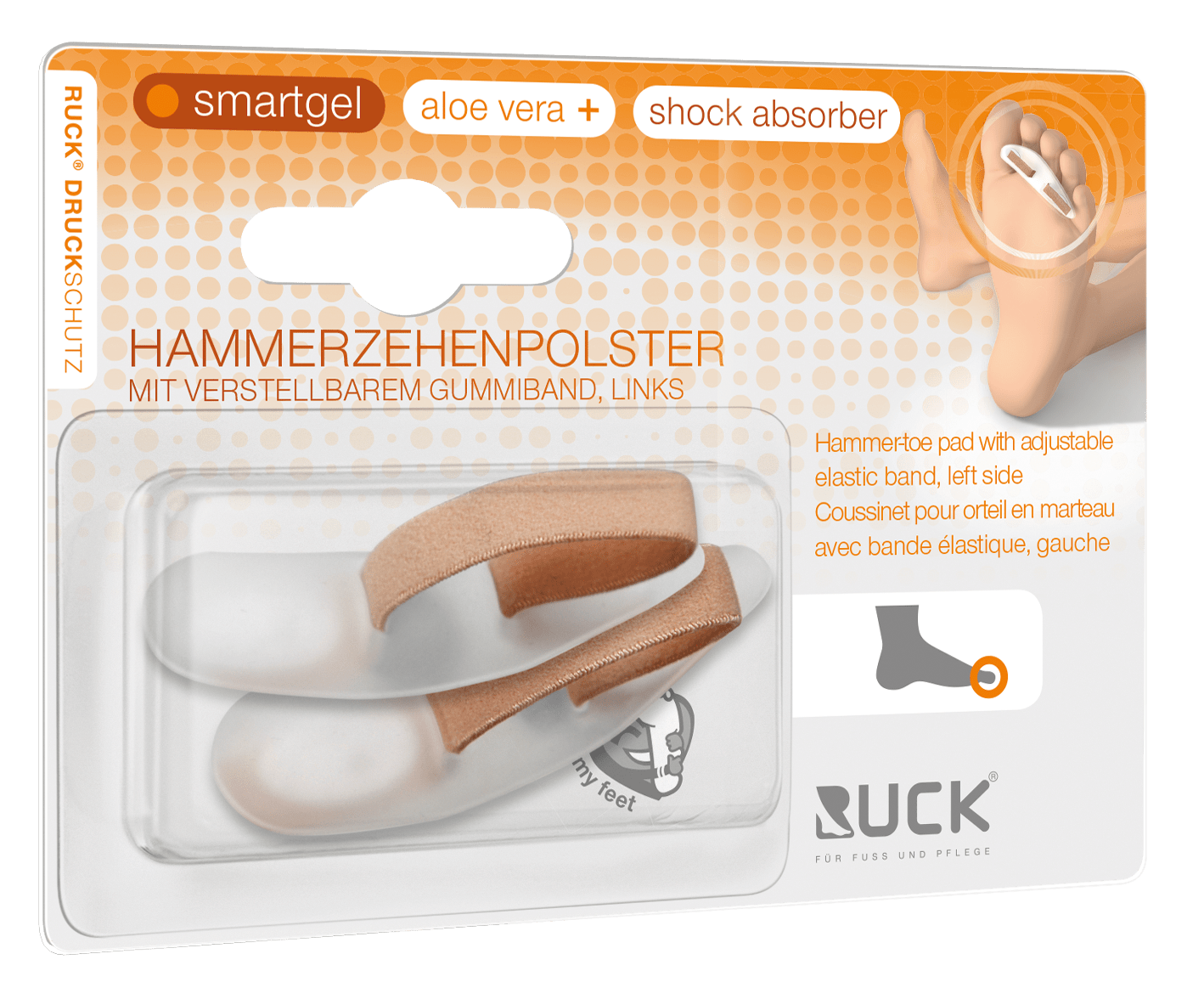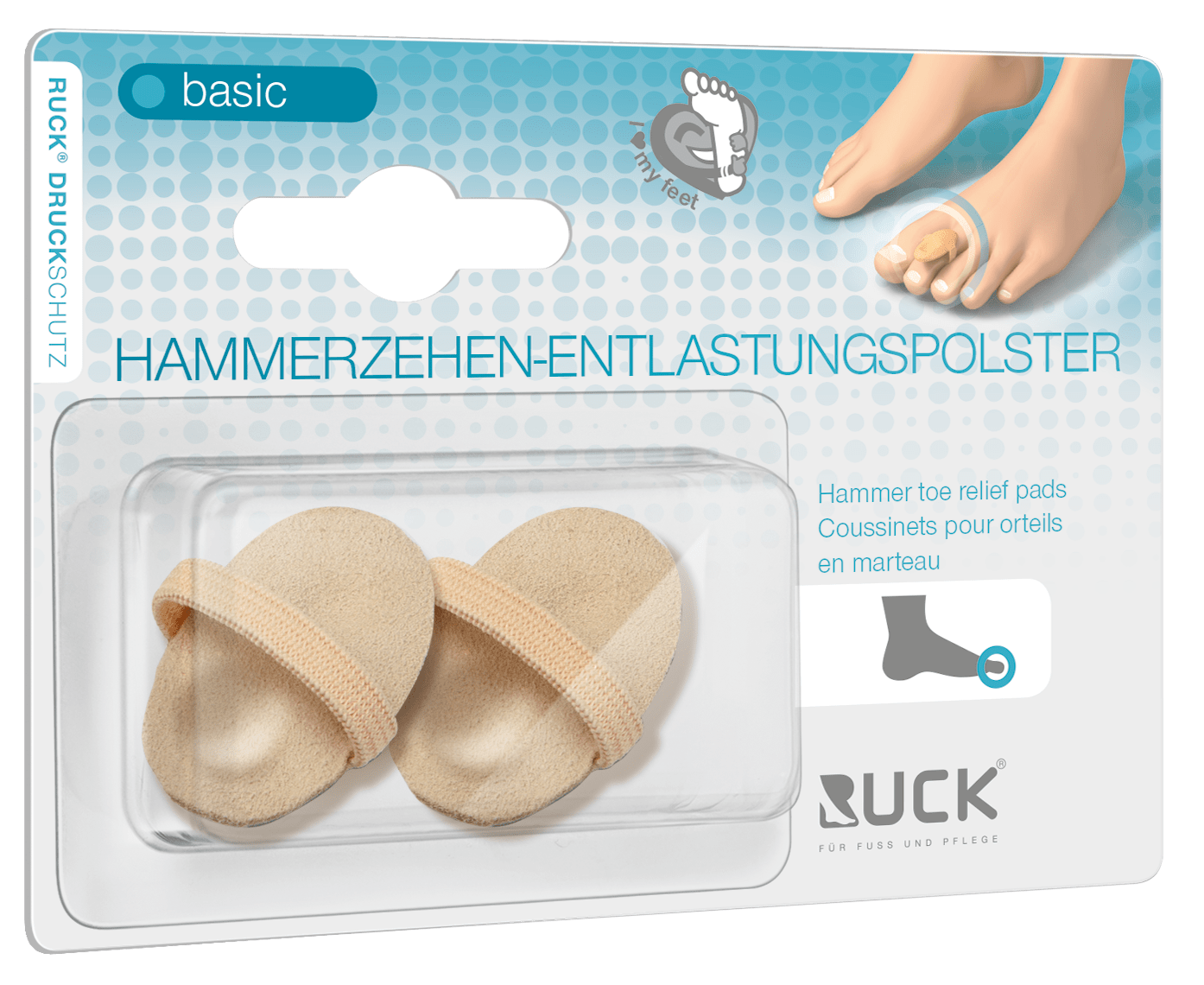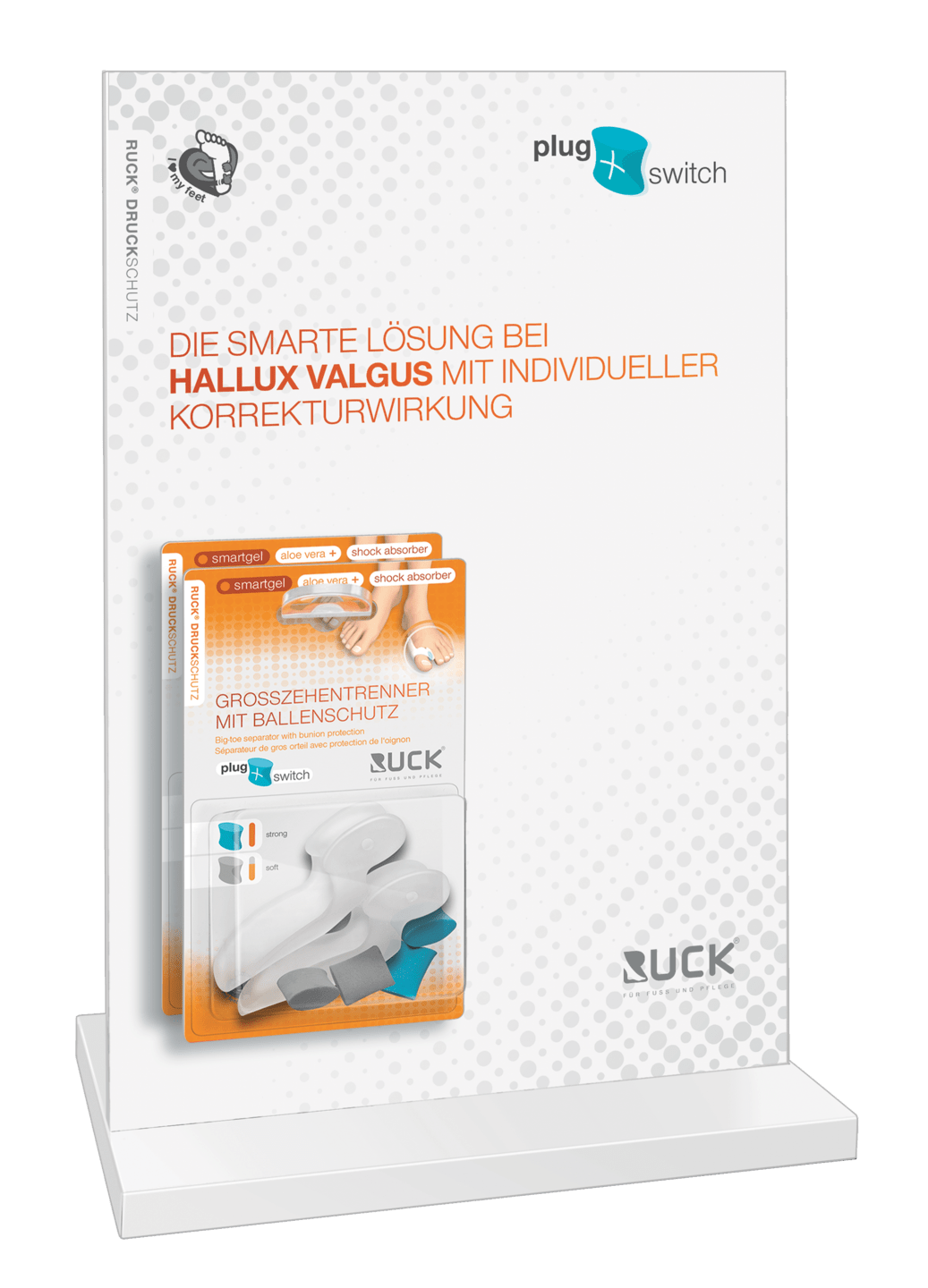Hammertoes & claw toes

Would you like to be part of the next chapter in our story?
We provide inspiring stories, top tips and informative discussion topics within the area that interests you most: podiatry and all things feet! Subscribe our newsletter & get free delivery!
Subscribe now
"I’m so happy that I can buy my RUCK products directly from Germany."
Dr Bharti Rajput MBE PhD, Director & Principal Podiatrist of The Foot, Expert Clinic (locations in Dundee and Cupar)
Register now & get 10% offHammer and claw toes: Malpositions with unpleasant side effects
As one of the most common misalignments of the toes, the presentation of hammer and claw toes is not only annoying in everyday life, but often also painful. Fortunately, there are various methods to alleviate the symptoms. Read on to find out exactly what hammer and claw toes are, what they are due to and how they can be prevented.
Definition and symptoms of hammer and claw toes
Hammer toes and claw toes fall into the category of toe deformities. The two terms should be considered separately. However, the symptoms are fundamentally similar. The typical signs and accompanying symptoms of the diseases include:
- curved toes
- painful pressure points
- Reinforced calluses
- open skin areas thanks to friction
- Health problems due to incorrect loading of the feet
As the disease progresses, the joints lose their mobility - crippling and stiffening in extreme cases.
When do we talk about hammer toes?
The hammer toe is recognisable by a severely curved toe end joint. The term is derived from the fact that the toe bone points towards the base like a hammer. In the worst case, the deformity, which usually affects the second toe, can have several toes overlapping.
When do we speak of claw toes?
In a claw toe, the flexion is found in the metatarsophalangeal and metacarpophalangeal joints, resulting in the formation of a deformity that prevents the tip of the toe from touching the base. The hyperextension affects the metatarsophalangeal joint. The second, third and/or fourth toe are often affected.
Causes and treatment options
Hammer and claw toes are not a congenital phenomenon. Rather, they are caused by everyday circumstances and a lack of attention to one's own foot health.
Cause number 1: incorrect footwear
Shoes with high heels may enhance many an outfit, but in the long run they prove to be counterproductive for the well-being of the foot. Wearing shoes that are too small and/or too tight is just as fatal.
In addition, the symptoms can often be due to different types of toe misalignment. For example, flat feet, fallen arches and splayed feet can in some cases cause hammer and claw toes. Accidents or neurological presentations are also responsible.
In most cases, only surgery can provide complete relief
If the disease is at an advanced stage, there is no way around corrective surgery. At this stage, it is impossible for the deformity to recede without appropriate intervention.
However, if you react if the first signs of a hammer or claw toe appear, this makes conservative treatment possible. It is highly helpful to ensure that more space is available in the shoes. In addition, protection for hammertoes and claw toes in the shape of toe protection rings, hammertoe pads, toe caps and tubes along with other pressure protection can help to prevent the clinical picture from deteriorating further.
Prevention is easier than cure
For those who frequently have to deal with foot complaints, it is advisable to use insoles, which are ideally customised for patients and their footwear. Even if it is not always feasible: to prevent the development of hammer and claw toes, it is important to avoid wearing shoes and walk barefoot as often as possible then.
However, the most important thing is to always choose shoes that are of high quality and that are neither too small nor too tight. This does not mean that you are not allowed to wear high heels on especially special occasions. In the long term, however, the footwear should not pose a risk to the health of your feet.
Attentive and regular foot care professional and/or podiatry treatment are also among the basic pillars of preventing hammer and claw toes. You can guarantee your patients this at all times - by furnishing your practice with high-quality products from HELLMUT RUCK.






















































